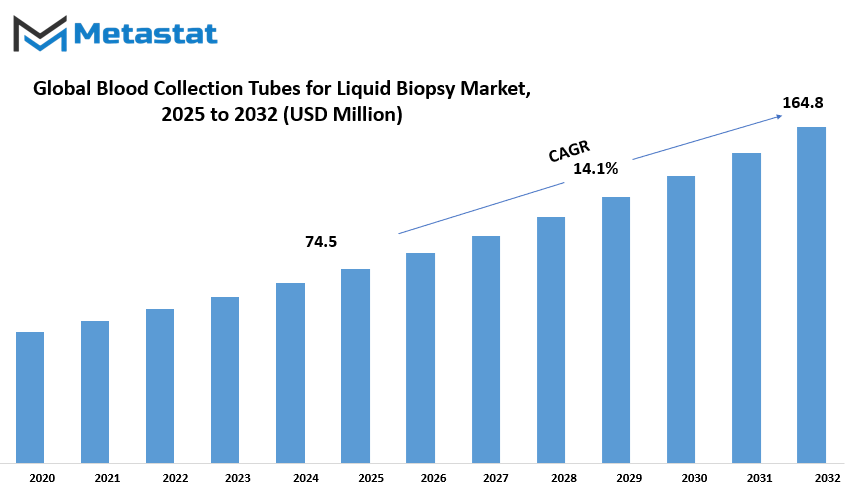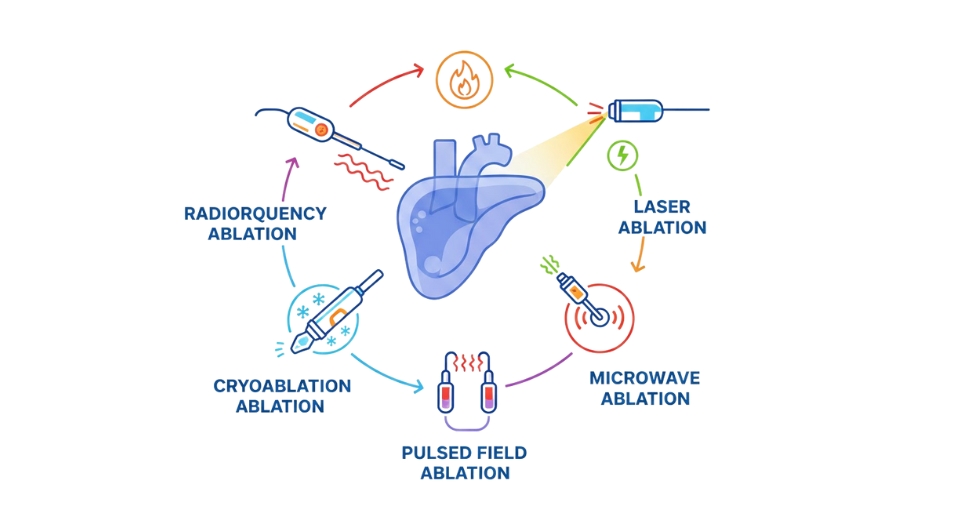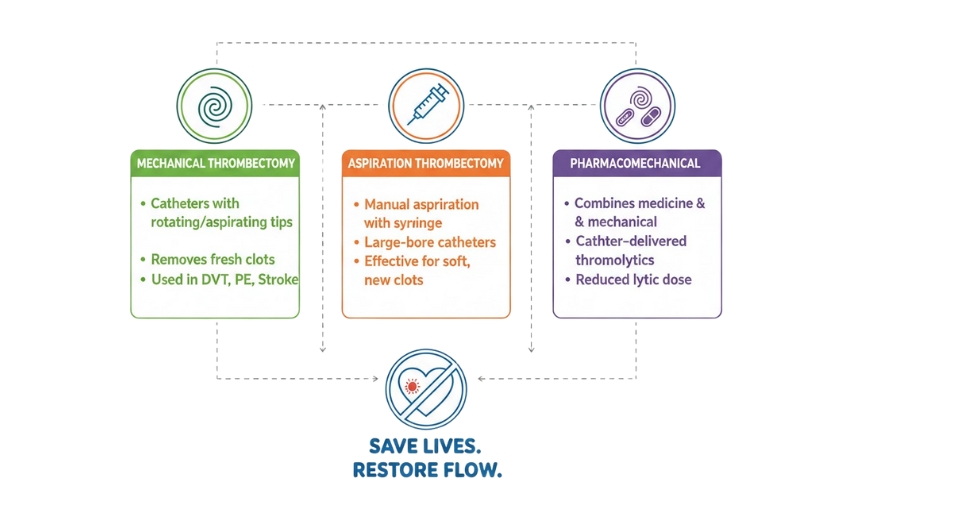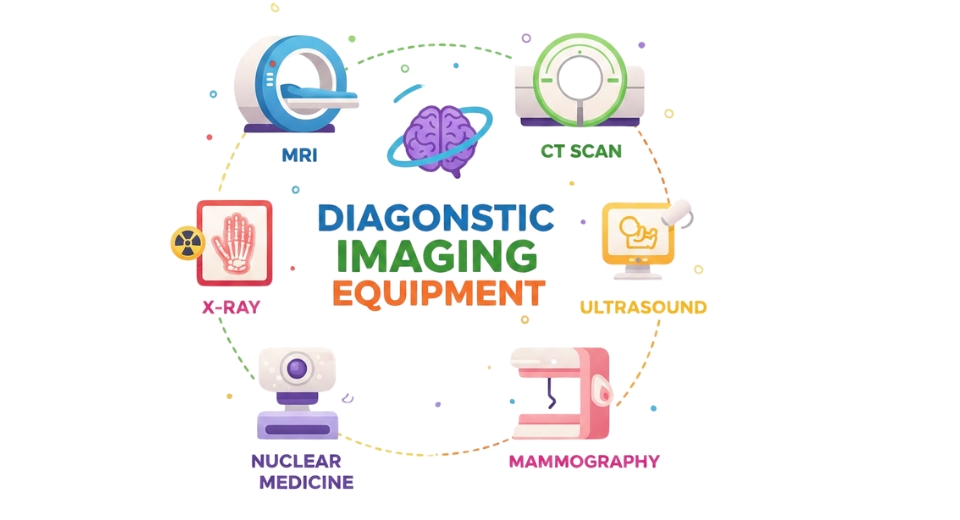MARKET OVERVIEW
The global blood collection tubes for liquid biopsy market, within the healthcare industry, represents a dynamic sector poised to achieve major developments and innovations that are still ahead. Significant advancements in diagnostic methods due to technology scaling up have made liquid biopsy a promising technique for detection and follow-up of various diseases, including cancer - through the need for the same efficient and reliable blood collection tubes to preserve and stabilize the known circulating biomarkers.
Specialized blood collection tubes play an essential role in maintaining the integrity of biomolecules in the diminishingly small amount of circulating tumor DNA (ctDNA), circulating tumor cells (CTCs), and various analytes found within the bloodstream. Liquid biopsy here marks itself as a less invasive technique, unlike other conventional tissue biopsies, not convenient for an invasive procedure, thereby overlooking the tumor heterogeneity; it is more capable of sequential monitoring of disease development and response to treatment.
In the short term, the interest in blood collection tubes well-tailored for liquid biopsy will soar as liquid biopsy is increasing in the appreciation of healthcare professionals due to its clinical utility in precision oncology and personalized medicine. These tubes will have to meet stern compliance tests to ensure perfect and reproducible results, leading to several innovations in tube design, materials, preservation techniques.
Likewise, the expanding landscape of research activities exploring liquid biopsy for other fields besides oncology, such as infectious diseases, prenatal screening, and transplant monitoring, etc., has tipped blood collection tubes to exponential growth in continuing demand. With every new discovery and validation of yet another biomarker, the blood collection tubes will have to somehow cater to the distinct needs posed by different diagnostic assays.
Already, the establishment of a medical system with a globalization spirit and an equally increasing scale of chronic disease events worldwide is anticipated to support greater application of blood collection tubes for liquid biopsy across geographies. The rapidly changing scenarios of medical facilities in emerging economies have presently located increasingly valuable marketing grounds for the tubes as the former gear for the promotion of liquid biopsy.
To realize the expected high prospects for the future, industry entities shall definitely put in serious investments to research and develop the performance and design of blood collection tubes within the context of liquid biopsy. Inter-organizational relationships are of utmost importance to bring about the benefits this ever-dynamic field offers to unmet needs through innovation.
Due to the advancement of technology, rapid adoption of liquid biopsy within the clinical environment, and increased applications in areas other than cancer, significant growth and innovation are on the cards for the Global Blood Collection Tube market.
Global blood collection tubes for liquid biopsy market is estimated to reach $164.8 Million by 2032; growing at a CAGR of 14.1% from 2025 to 2032.

GROWTH FACTORS
The global blood collection tubes for liquid biopsy market has witnessed substantial growth in demand as cancer incidences have risen and there is a desire for less-invasive diagnostic approaches. The boom in demand has also found a spur from advances in liquid biopsy technology and personalized medicine itself in light of timely and efficient sample collection. Unfortunately, backlashes could lie in the way of the assessment of this market through unfavorable regulatory conditions, compliance troubles on sample collection and processing, and scant reimbursement strategies.
In the long run, the market is set to grow even more as the field of liquid biopsy extends beyond cancer diagnosis. Prenatal testing and infectious disease monitoring equally lend weight to the prospect of future growth of this market.
The increase in cancer prevalence has been an immense incentive for the growing demand for liquid biopsy. Given that these techniques are less invasive than conventional invasive tissue biopsy, they are much accepted from the patient viewpoint as well as the doctor advisability to go for the liquid biopsy. Liquid biopsy also adorns the act of treating a patient over time: monitoring the tumor's progression and response to treatment incorporates feedback to personalize the approach to the treatment.
The higher sensitivity and specificity of the newly developed liquid biopsy test technologies are enabling them to detect genetic mutations and biomarkers associated with cancer very early. Such detection will consequently impact patients positively by enhancing their outcomes through early detection and intervention.
Personalized medicine is another branch of study that needs appropriate sample collection methods. Treatment given to a patient, depending on the patient's own genetic makeup, is personalized. In this scenario, liquid biopsy is becoming very important, as it facilitates the non-invasive and real-time monitoring of disease progression and response to treatment.
Nevertheless, within this market, a wake of challenges has been given rise by the regulatory and reimbursement issues regarding sample collection. There exist stringent regulations that liquid biopsy products have to go through, and which deter time to market and increase costs. The scant reimbursement of liquid biopsy procedures may deter uptake by healthcare providers, especially in areas where healthcare money is tight.
There are opportunities waiting for their time to shine, given the area of application is becoming broader. Liquid biopsies could be advantageous for prenatal testing as the least invasive option compared to the threat that amniocentesis poses to mothers. Infectious disease surveillance and management could thus stand to benefit from liquid biopsies with quite unparalleled monitoring protocols.
MARKET SEGMENTATION
By Type
Despite inviting health policies and regulations, the global blood collection tubes for liquid biopsy market is segmented based on indicators which throw light on the future of medical diagnostics. In the year 2025, different types of tubes represented unequal shares of the market. Among these, ccfDNA Tubes indicate a significant demand for specifically designed tubes for circulating cell-free DNA (ccfDNA) collection, thus suggesting an agile interest in non-invasive means of genetic testing and cancer screening.
The cfRNA Tubes, on the other hand, signify cell-free RNA (cf-RNA) collections for molecular diagnostics and disease monitoring. As soon as research advances, the chances are out there for cfRNA applications in detecting and monitoring diseases such as cancer and infectious diseases, and it is those potentials for which the demand for specialized collection media will be instigated.
Another mound for CTC Tubes nests much promise since circulating tumor cells (CTCs) are regarded as worthwhile prognostic markers in cancer diagnosis, treatment monitoring, and prognosis. This attribution in the value of CTC Tubes showcases how much liquid biopsies are being acknowledged as a useful new instrument in cancer management and for the insight into tumor biology and treatment response that they provide.
The market also includes other tubes, including gDNA Tubes and other blood collection tubes, which serve special research and diagnostic purposes. The variety of tube types demonstrates the complexity of liquid biopsy applications as well as the requirements for specialized methods for collection and preservation that are essential to retention of biomolecular integrity, like DNA, RNA, and proteins.
The global blood collection tubes for liquid biopsy market would also pave fruitful growth opportunities and innovations in the years to come. The technological development and research would allow for the production of highly specialized tubes for certain biomarkers and diagnostic applications. This evolution will thus avail medical personnel to be able to extract much more accurate and holistic information from liquid biopsies for better diagnosis of diseases, monitoring responses to treatment, and personalizing patient care.
Furthermore, there is a large demand for blood collection tubes that are optimized for different sample types and biomolecules, given that liquid biopsies are increasingly being favored over conventional tissue biopsies. As the breakthroughs in liquid biopsy will be made available at a much lower price, thus they will prove revolutionary for disease diagnosis and management, making sure that patients have non-invasive and real-time insight into their health status.
The type segmentation of the global blood collection tubes for liquid biopsy market emphasizes that liquid biopsy technology has widely varied applications and is, in turn, an emerging area. These specialized tubes would continue to be an integral part of the evolution and sustenance of personalized medicine and therefore in the enhancement of patient outcomes in time to come.
By Material
The global blood collection tubes for liquid biopsy market are categorized on the basis of the material used, namely, glass or plastic, which, in fact, fit certain applications in medicine according to their very characteristic properties.
Glass blood collection tubes are the oldest materials used in medical settings. They are strong, stable, and inert and are used in general blood testing or liquid biopsy procedures. Glass tubes are chemically inert and provide the safest possible environment for blood sample conservation so as to obtain true test results after the longest possible period. On the flip side, glass tubes can be particularly fragile and pose a danger of breakage during transportation or other forms of handling.
However, plastic blood collection tubes are fast gaining preference due to their lightweight and shatter-resistant properties. Cumbersome in any setting in which concerns of breakage are paramount, plastic blood collection tubes offer major convenience during fieldwork or in mobile clinics. In particular, they allow design flexibility for innovations, such as vacuum-sealed caps or caps with integrated additives to preserve samples. However, some end users find chemical interactions between plastic material and blood samples as a potential factor for limiting their use in certain applications.
On the horizon of development, materials science may lead to blood collection tube materials of choice with desirable properties. Future tubes may benefit from nanotechnology for better durability, prevention of contamination, and enhancement of sample stability. Another potential avenue of research is investigating biodegradable materials as sustainable alternatives to conventional plastics, tackling environmental issues related to medical waste.
By Application
With technological advancement comes the need for more efficient and less invasive diagnostic techniques. Among these innovations, global blood collection tubes for liquid biopsy are emerging as a less invasive yet quite effective transitory route for disease diagnosis.
In fact, liquid biopsy has developed an enormous promise under the present advancements in medical research and diagnostics. It is unlike a traditional tissue biopsy with all those invasive procedures. Bodily fluids, especially blood, are used to detect all possible medical disorders in a person's body concerning a biomarker. Less invasiveness equals less patient discomfort and more frequent evaluations resulting in early detection and intervention.
Among the application categories under the global blood collection tubes for liquid biopsy market are the two major segmentations-In-Vitro Diagnostics (IVD) and Research. The In-Vitro Diagnostics comprise laboratory testing intended for them to be clinically used in the diagnosis and subsequent monitoring of disease. By collecting blood in tubes designed for liquid biopsy, professionals can acquire useful molecular data in a non-invasive manner, thus enhancing benefit to and outcome from care.
Research, encompassing a wide scope of scientific endeavors meant to obtain efficacy in understanding disease mechanisms and developing promising therapeutic interventions, on the other hand. Blood collection tubes for liquid biopsy form an indispensable part of the operations within a research laboratory to help scientists analyze circulating biomarkers with hitherto unreachable levels of precision and efficiency.
By End User
Today the amazing world-lnd advances about modern medical technology, modify the healthcare system-overall. One such innovation, however, is global blood collection tubes for liquid biopsy market. These tubes can revolutionize noninvasive ways of diagnosing as well as monitoring various kinds of medical conditions, giving them quick and efficient ways for obtaining critical diagnostic information.
The global blood collection tubes for liquid biopsy market is segmented into Genetic Diagnostic Labs, R&D Centers, and Conventional Diagnostic Centers based on end users. Each segment plays an important role in working and promoting advanced liquid biopsy technology.
Genetic Diagnostic Labs are a major application of the liquid biopsy technique. A sample of the body fluid, e.g. blood which could be the source of blood collection tube advanced techniques, is analyzed for genetic material types. Liquid biopsy-the genetic analysis from a body fluid sample-is ideally suited to the Genetic Diagnostic Labs, where precise personalized diagnostic information would greatly assist in early detection and treatment of a significant portion of diseases, e.g. cancer.
R&D Centers are the ones that thrive upon strengthening and encouraging innovation and discovery in the field of liquid biopsy. Researchers and scientists in the R&D Centers keep on finding improved methodologies and technologies that would enhance efficacy and accessibility to liquid biopsy testing. Blood collection tubes for liquid biopsy would definitely be part of research endeavors since they are essential standard tools that ensure live sample collection and analysis.
Conventional Diagnostic Centers are beginning to appreciate the role of liquid biopsy in saving lives. Such centers can provide patients with a less invasive alternative to traditional tissue biopsies by proceeding to blood collection tubes for liquid biopsy into their diagnostic protocols. The result is much more comfortable patients, and real-time evidence from healthcare on disease progression and treatment response.
The future of the global blood collection tubes for liquid biopsy market looks bright for suitable future growth as advances in healthcare technology continue to bring innovative strides. As personalized medicine and early detection of diseases are gaining increasing prominence, the potential demand for liquid biopsy solutions will increase. Furthermore, the blood collection tube market for specific use will grow in tandem as awareness and incorporation of the liquid biopsy technique increase in different healthcare facilities.
|
Forecast Period |
2025-2032 |
|
Market Size in 2025 |
$74.5 million |
|
Market Size by 2032 |
$164.8 Million |
|
Growth Rate from 2025 to 2032 |
14.1% |
|
Base Year |
2025 |
|
Regions Covered |
North America, Europe, Asia-Pacific, South America, Middle East & Africa |
REGIONAL ANALYSIS
The global blood collection tubes for liquid biopsy markets have been geographies-wise further segment included North America, Europe, Asia Pacific, and Middle East and Africa, and South America. This will help us understand the market distribution across the regions and help according to regional trends and preferences.
North America is anticipated to lead the global blood collection tubes for liquid biopsy markett by being one of the most well-developed healthcare infrastructures and technically advanced areas. The presence of key market players and good adoption of advanced medical technologies in developed countries such as the United States and Canada will only add to these spurts in the growth of this segment.
The global blood collection tubes for liquid biopsy market are anticipated to gain significantly in Europe due to increased allocations in health research and development along with growing consciousness on the benefits provided by liquid biopsy techniques in cancer diagnosis and monitoring. Key countries likely to fuel the growth of this market are Germany, France, and the UK.
The promising and lucrative market for Blood Collection Tubes for Liquid Biopsy will be the Asia Pacific region, where the healthcare industry is developing rapidly and dedicated initiatives from the government are widely advancing concerning healthcare infrastructure. The increasing demand for liquid biochemistry technology in large, populated countries, such as China, Japan, and India, will increase tremendously because of raising cancer cases and awareness regarding early disease detection.
Awareness about better healthcare facilities improving and the increase in healthcare expenditure is also anticipated to drive its market growth in South America, whereby countries like Brazil and Argentina are driving this growth in Blood Collection Tubes for Liquid Biopsy. The use of liquid biopsy techniques in cancer diagnostics and treatment monitoring is thus expected to witness a significant increase in adoption in this area.
Moderate market growth is expected within the Middle East & Africa region over the global blood collection tubes for liquid biopsy market. Market growth is likely to be propelled by such factors as increased investments in healthcare infrastructure and rising awareness about advanced diagnostic techniques in countries such as Saudi Arabia, the UAE, and South Africa.
The global blood collection tubes for liquid biopsy market are contacted with the outside world above their unifying external space between the various markets around the globe. Each region presents different opportunities and challenges. Understanding the region and its associated consumer dynamics will be paramount for any organization involved in this market to effectively tap any growth opportunities and competitive space.

COMPETITIVE PLAYERS
These individuals not only play roles as industry players but also as admirable contributors bringing technology and developing solutions concerning liquid biopsy, which is a relatively new technology used for disease detection and monitoring in body fluids. This would change the paradigms of diagnostics and personalized medicine with minimal invasiveness alternatives to conventional tissue biopsy, replacing them with liquid biopsy.
Basically, connoisseurs such as Roche are leveraging their know-how in the forefront of blood collection tube technology for liquid biopsy applications. Whereas Streck and Preanalytix are giants in the area of sample stabilization and preservation to keep biomarkers intact for an accurate analysis.
Norgen Biotech and Biocept specialize in liquid biopsy for isolating and detecting circulating tumor cells and cell-free DNA. Their innovative platforms enable clinicians to monitor disease progression and therapeutic response with greater precision than ever.
Menarini Silicon Biosystems and Exact Sciences Corporation are pushing directions in total liquid biopsy solutions, integrating sample preparation, analysis, and interpretation into instruments for operation. Invitek Diagnostics and Abbott Laboratories build diagnostic assays and kits geared towards the specific disease indication to improve clinical utility and accessibility.
Especially Becton, Dickinson and Company (BD) and Sysmex Corporation provide the backbone infrastructure and automation solutions to optimize sample processing and throughput for high-volume laboratories. Guardant Health and Greiner Bio-One focuses on the commercialization of liquid biopsy tests in oncology applications, increasing the clinical utility of these technologies.
Epic Sciences and ANGLE plc are the game-changers in rare cell detection and analysis, allowing the identification of rare genetic mutations and tumor evasion strategies. Their breakthroughs have serious ramifications for precision medicine, steering therapeutic decisions and providing better patient outcomes.
The global blood collection tubes for liquid biopsy market matured with intense competition and innovativeness among its players who invest in technology, diagnostics as well as therapeutics. Such build-ups will further shape the future of medicine toward a more personalized health care and patient outcome.
Blood Collection Tubes for Liquid Biopsy Market Key Segments:
By Type
- ccfDNA Tubes
- cfRNA Tubes
- CTC Tubes
- gDNA Tubes
- Others
By Material
- Glass
- Plastic
By Application
- In-Vitro Diagnostics (IVD)
- Research
By End User
- Genetic Diagnostic Labs
- R&D Centers
- Conventional Diagnostic Centers
Key Global Blood Collection Tubes for Liquid Biopsy Industry Players
- Roche
- Streck
- Preanalytix
- Norgen Biotek
- Biocept
- Menarini Silicon Biosystems
- Exact Sciences Corporation
- Invitek Diagnostics
- Abbott Laboratories
- Becton, Dickinson and Company (BD)
- Sysmex Corporation
- Menarini Silicon Biosystems
- Guardant Health
- Greiner Bio-One
- Epic Sciences
WHAT REPORT PROVIDES
- Full in-depth analysis of the parent Industry
- Important changes in market and its dynamics
- Segmentation details of the market
- Former, on-going, and projected market analysis in terms of volume and value
- Assessment of niche industry developments
- Market share analysis
- Key strategies of major players
- Emerging segments and regional growth potential








 US: +1 3023308252
US: +1 3023308252






